Shenzhen Wesort Optoelectronics Co., Ltd.
Address:Building 29, Longwangmiao Industrial Zone, Fuyong street, Bao'an District, Shenzhen, Guangdong Province, China.
Phone:+86 181 2370 6862
In the realm of plastic manufacturing and recycling, the plastic color sorter has emerged as a game - changing technology. It is an essential tool that addresses the complex challenges associated with handling plastics in various industrial settings.
Understanding the Plastic Color Sorter Technology
The plastic color sorter is a marvel of modern engineering that combines optical sensors, image processing algorithms, and high - speed sorting mechanisms. At its core, it utilizes advanced spectrometers and high - resolution cameras. These spectrometers are capable of analyzing the spectral properties of plastics with remarkable precision. They can differentiate between various plastic types based on their unique spectral signatures, which are often associated with different colors. The cameras, on the other hand, capture detailed images of the plastic materials as they pass through the sorting system. The image processing algorithms then work to identify any color variations, flaws, or impurities within the plastic pieces.

Applications in Plastic Recycling
Sorting by Color in Mixed Plastic Waste
In plastic recycling, one of the most significant challenges is dealing with mixed plastic waste. Different types of plastics often come in a variety of colors. A plastic color sorter can accurately separate plastics based on their color, which is crucial for subsequent recycling processes. For example, in a recycling facility handling post - consumer plastic bottles, the sorter can distinguish between clear PET bottles and colored PET bottles. This allows recyclers to process each type separately, maximizing the value of the recycled material. Clear PET can be used in high - quality applications such as food - grade packaging, while colored PET may be used in non - food - related products or remanufactured into colored plastic items.
Removal of Contaminated and Discolored Plastics
Plastic waste often contains contaminated or discolored pieces. These may be due to exposure to environmental factors, chemical reactions during use, or improper storage. The plastic color sorter can identify and remove these unwanted plastics. In the case of HDPE plastics used in milk jugs, for instance, any jugs with discoloration caused by sunlight exposure or chemical degradation can be sorted out. This ensures that the recycled HDPE maintains its quality and can be used to produce new, high - performance products such as durable plastic containers or pipes.
Identification of Different Plastic Resins
Beyond color sorting, the plastic color sorter can also identify different plastic resins. Plastics like PP, PE, PVC, and ABS have distinct optical properties that the sorter's sensors can detect. This ability is invaluable in recycling plants as it enables the separation of different plastic types. For example, separating PVC from other plastics is essential because PVC has different melting and processing requirements. By accurately identifying and sorting PVC, recyclers can prevent contamination of other plastic streams during the recycling process, improving the overall quality of the recycled plastics.

Advantages in Plastic Processing
Quality Control in Plastic Product Manufacturing
In plastic product manufacturing, maintaining color consistency is vital for product aesthetics and quality. The plastic color sorter can be used to ensure that only plastics of the correct color are used in production. For example, in the production of plastic toys, where bright and consistent colors are desired, the sorter can screen out any plastic pellets with color variations. This results in toys with a more uniform and appealing appearance, enhancing customer satisfaction and brand reputation.
Increasing Production Efficiency
The plastic color sorter operates at high speeds, capable of processing large volumes of plastic materials in a short time. This significantly increases the efficiency of both recycling and manufacturing processes. In a plastic injection molding factory, the sorter can quickly supply the molding machines with the right color and type of plastic pellets, reducing production downtime and increasing overall output.
Cost Reduction and Resource Optimization
By accurately sorting plastics, the plastic color sorter reduces waste and maximizes the use of available plastic resources. In recycling, it increases the yield of high - quality recycled plastics, reducing the need for virgin plastic materials. In manufacturing, it minimizes the rejection of finished products due to color or quality issues related to plastic materials. This leads to cost savings in both raw material procurement and waste management.
Future Trends and Developments
The field of plastic color sorting is constantly evolving. With the increasing demand for sustainable plastic management, there is a growing focus on improving the accuracy and efficiency of these sorters. Research is underway to develop more advanced sensors that can detect even more subtle differences in plastic properties. Additionally, there is a trend towards integrating artificial intelligence and machine learning algorithms into plastic color sorters. These technologies will enable the sorters to adapt to new types of plastics and color variations more quickly, further enhancing their performance in the complex world of plastic recycling and processing.
In conclusion, the plastic color sorter is a vital component in the plastic industry, driving improvements in recycling, processing, and product quality. Its continuous development and application will play a crucial role in meeting the challenges of sustainable plastic management and the growing demands of the global market.
In the realm of plastic manufacturing and recycling, the plastic color sorter has emerged as a game - changing technology. It is an essential tool that addresses the complex challenges associated with handling plastics in various industrial settings.
Understanding the Plastic Color Sorter Technology
The plastic color sorter is a marvel of modern engineering that combines optical sensors, image processing algorithms, and high - speed sorting mechanisms. At its core, it utilizes advanced spectrometers and high - resolution cameras. These spectrometers are capable of analyzing the spectral properties of plastics with remarkable precision. They can differentiate between various plastic types based on their unique spectral signatures, which are often associated with different colors. The cameras, on the other hand, capture detailed images of the plastic materials as they pass through the sorting system. The image processing algorithms then work to identify any color variations, flaws, or impurities within the plastic pieces.

Applications in Plastic Recycling
Sorting by Color in Mixed Plastic Waste
In plastic recycling, one of the most significant challenges is dealing with mixed plastic waste. Different types of plastics often come in a variety of colors. A plastic color sorter can accurately separate plastics based on their color, which is crucial for subsequent recycling processes. For example, in a recycling facility handling post - consumer plastic bottles, the sorter can distinguish between clear PET bottles and colored PET bottles. This allows recyclers to process each type separately, maximizing the value of the recycled material. Clear PET can be used in high - quality applications such as food - grade packaging, while colored PET may be used in non - food - related products or remanufactured into colored plastic items.
Removal of Contaminated and Discolored Plastics
Plastic waste often contains contaminated or discolored pieces. These may be due to exposure to environmental factors, chemical reactions during use, or improper storage. The plastic color sorter can identify and remove these unwanted plastics. In the case of HDPE plastics used in milk jugs, for instance, any jugs with discoloration caused by sunlight exposure or chemical degradation can be sorted out. This ensures that the recycled HDPE maintains its quality and can be used to produce new, high - performance products such as durable plastic containers or pipes.
Identification of Different Plastic Resins
Beyond color sorting, the plastic color sorter can also identify different plastic resins. Plastics like PP, PE, PVC, and ABS have distinct optical properties that the sorter's sensors can detect. This ability is invaluable in recycling plants as it enables the separation of different plastic types. For example, separating PVC from other plastics is essential because PVC has different melting and processing requirements. By accurately identifying and sorting PVC, recyclers can prevent contamination of other plastic streams during the recycling process, improving the overall quality of the recycled plastics.

Advantages in Plastic Processing
Quality Control in Plastic Product Manufacturing
In plastic product manufacturing, maintaining color consistency is vital for product aesthetics and quality. The plastic color sorter can be used to ensure that only plastics of the correct color are used in production. For example, in the production of plastic toys, where bright and consistent colors are desired, the sorter can screen out any plastic pellets with color variations. This results in toys with a more uniform and appealing appearance, enhancing customer satisfaction and brand reputation.
Increasing Production Efficiency
The plastic color sorter operates at high speeds, capable of processing large volumes of plastic materials in a short time. This significantly increases the efficiency of both recycling and manufacturing processes. In a plastic injection molding factory, the sorter can quickly supply the molding machines with the right color and type of plastic pellets, reducing production downtime and increasing overall output.
Cost Reduction and Resource Optimization
By accurately sorting plastics, the plastic color sorter reduces waste and maximizes the use of available plastic resources. In recycling, it increases the yield of high - quality recycled plastics, reducing the need for virgin plastic materials. In manufacturing, it minimizes the rejection of finished products due to color or quality issues related to plastic materials. This leads to cost savings in both raw material procurement and waste management.
Future Trends and Developments
The field of plastic color sorting is constantly evolving. With the increasing demand for sustainable plastic management, there is a growing focus on improving the accuracy and efficiency of these sorters. Research is underway to develop more advanced sensors that can detect even more subtle differences in plastic properties. Additionally, there is a trend towards integrating artificial intelligence and machine learning algorithms into plastic color sorters. These technologies will enable the sorters to adapt to new types of plastics and color variations more quickly, further enhancing their performance in the complex world of plastic recycling and processing.
In conclusion, the plastic color sorter is a vital component in the plastic industry, driving improvements in recycling, processing, and product quality. Its continuous development and application will play a crucial role in meeting the challenges of sustainable plastic management and the growing demands of the global market.

In the world of walnut processing, even the smallest imperfection can significantly impact product quality, market price, and brand reputation. Mold, insect damage, broken pieces, or inconsistent color are common defects that reduce the value of wa...
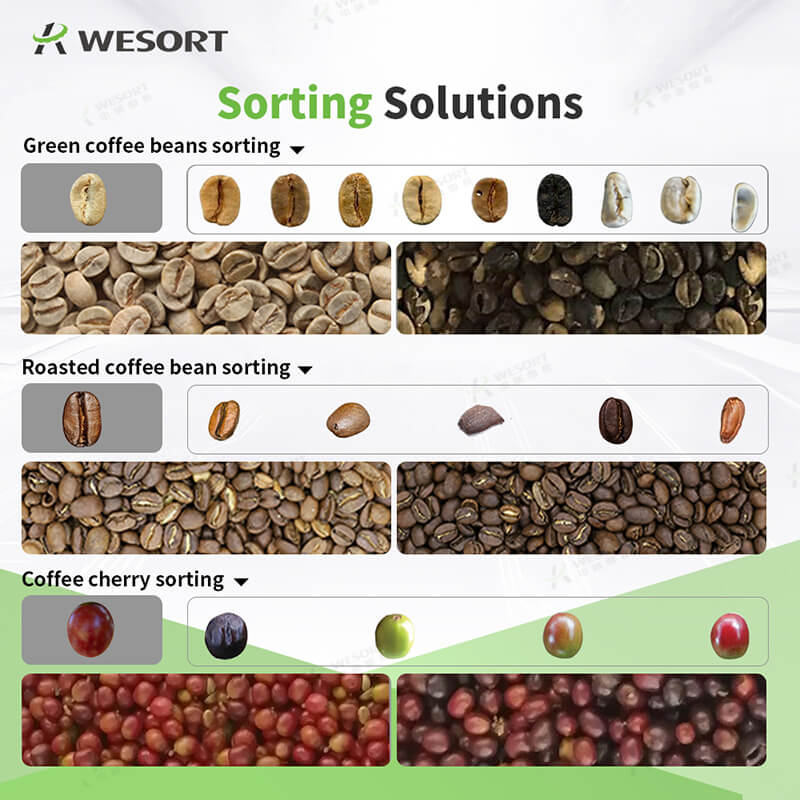
In the competitive coffee industry, quality is everything. Yet defects such as moldy beans, insect damage, immature coffee cherries, and inconsistent roasting levels can severely impact the taste, aroma, and grade of your coffee. Traditional sortin...
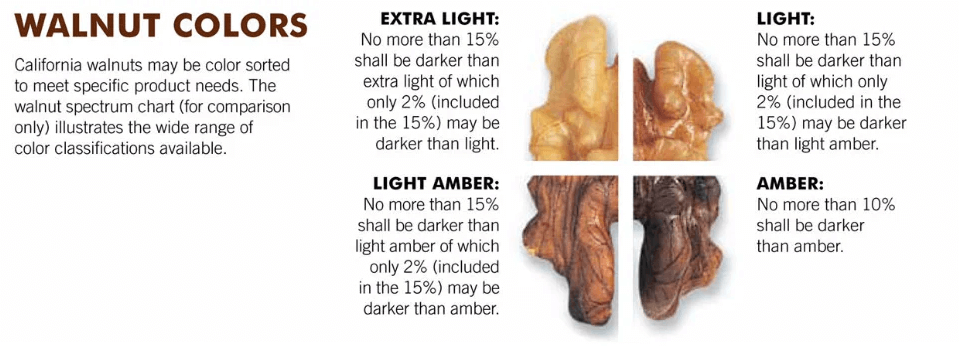
The demand for high-quality, uniformly sorted walnuts is rising globally due to increasing consumption, especially in the health food and snack industries. To meet market expectations, walnut processors are looking for advanced walnut sorting machi...
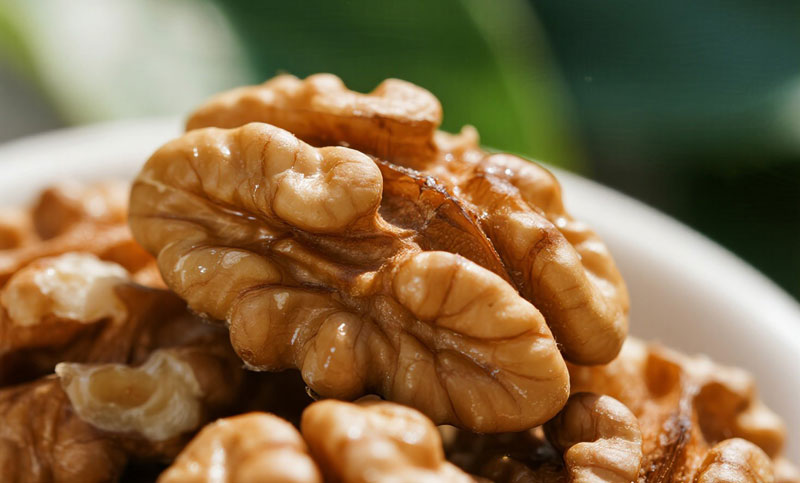
In the nut deep processing industry, the multi-level and accurate sorting of walnut kernels is not only related to product quality, but also directly affects corporate profits and brand reputation. However, many factories still face three major pro...

Meta Description: Looking for the top hazelnut sorting machine manufacturer? WESORT offers advanced hazelnut color sorters with AI deep learning to efficiently remove defects, pests, and foreign materials. Boost your hazelnut processing efficienc...
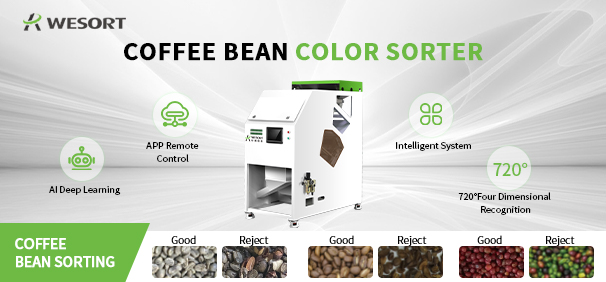
With the growing popularity of specialty coffee, the purity of coffee beans determines the aroma and taste of a cup of coffee. Achieving 99.9% purity requires high-performance coffee bean sorting equipment. Among Chinese coffee bean color sorter ma...
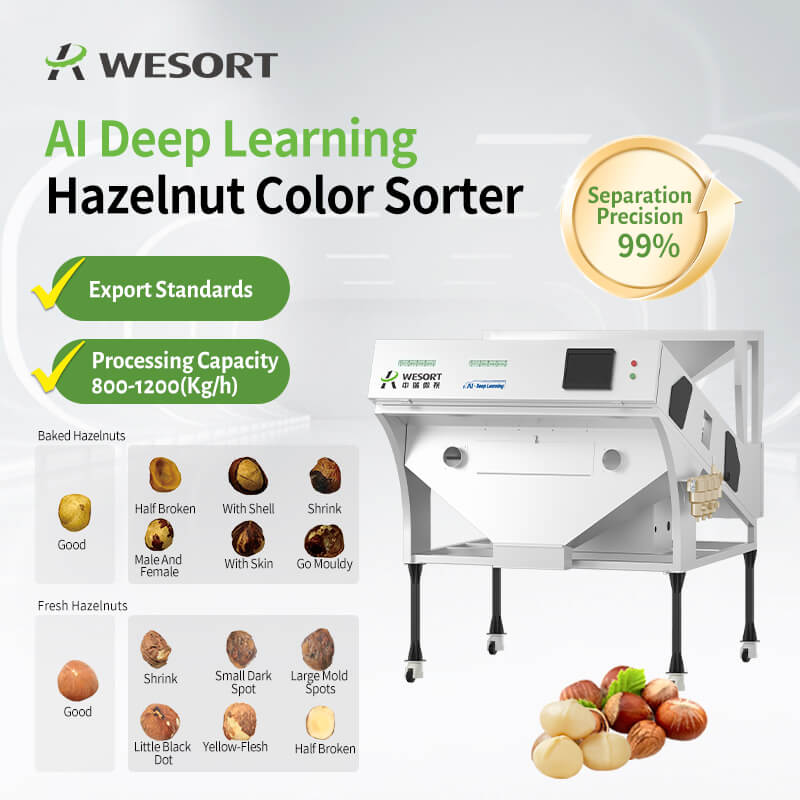
What's the most vexing issue in the hazelnut industry chain? It's not yield, but quality. Defects like mold, wrinkled skin, and foreign matter not only reduce product value but can also put export orders at risk. The solution isn't to increase the ...
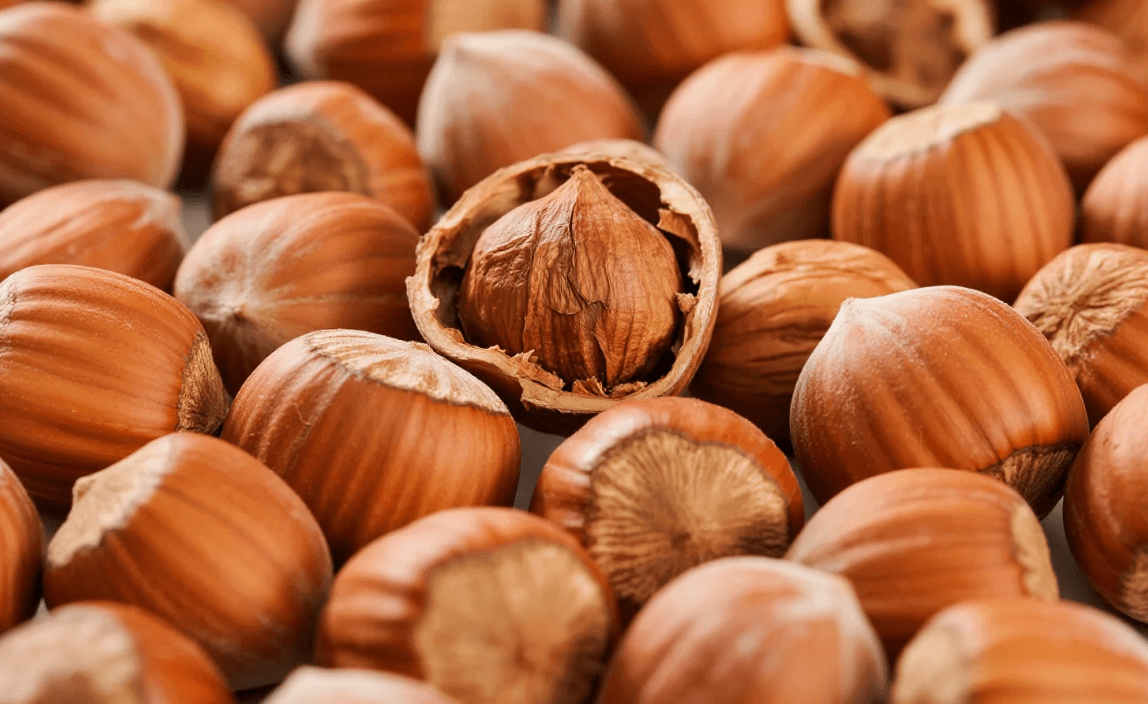
Every hazelnut tells a story—about the soil it grew in, the care during harvest, and the precision of its processing. Yet between farm and final product, hidden defects like mold, insect damage, and discoloration can turn premium hazelnuts into cos...
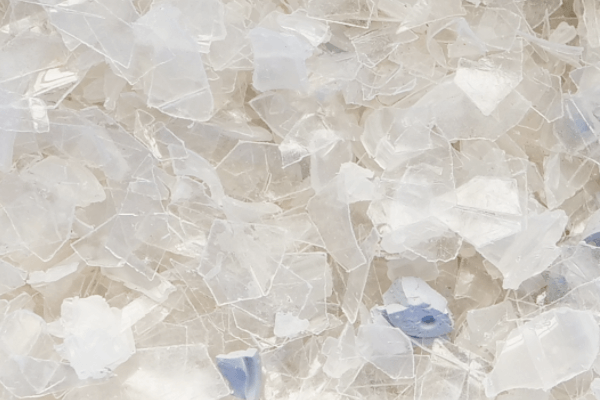
Plastic waste recycling is one of the most pressing challenges in today’s sustainability-driven world. Proper plastic sorting ensures high-quality recycled materials, reduces environmental impact, and improves profitability for recycling businesses...
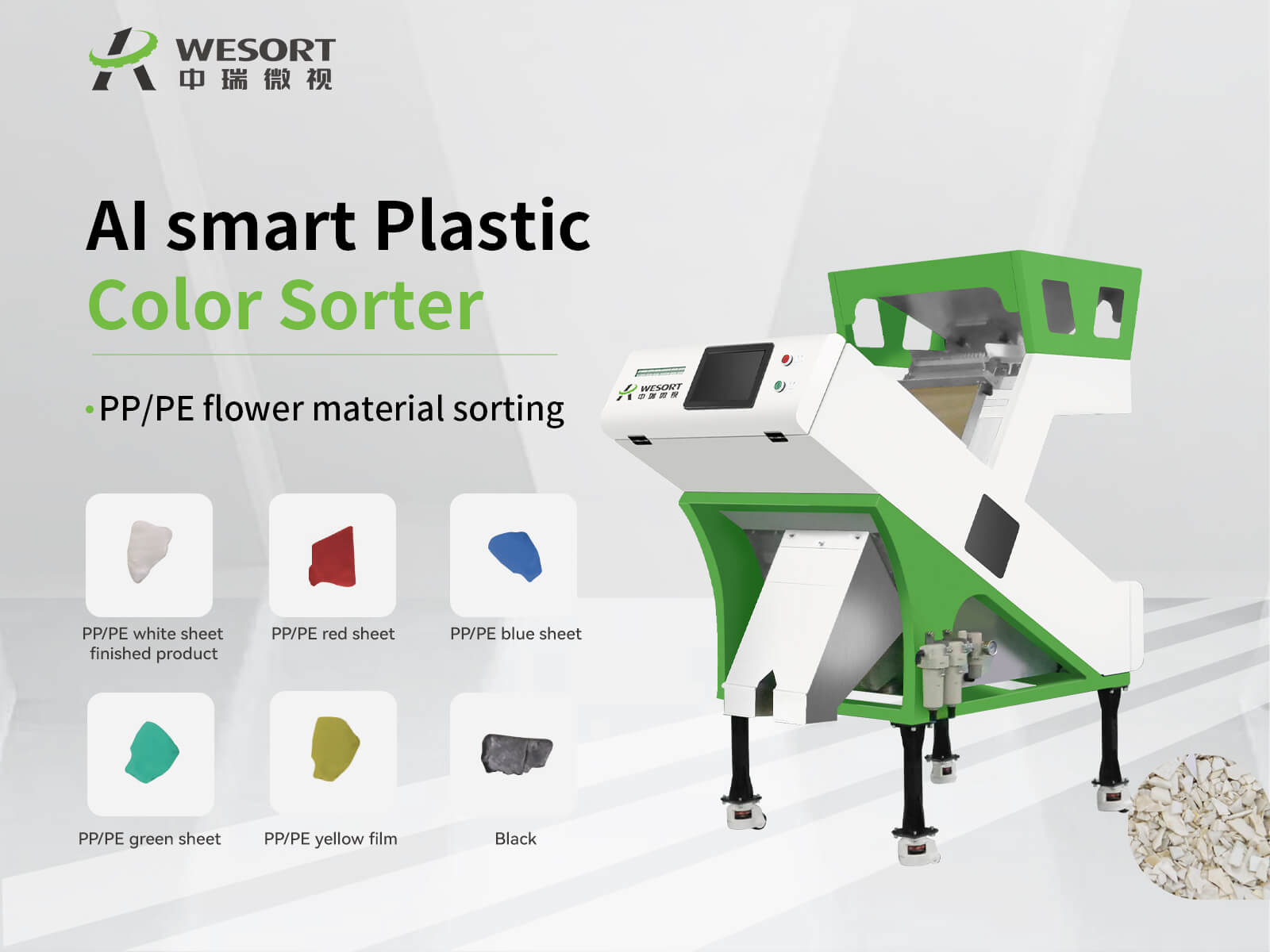
In the plastic recycling industry, purity and efficiency directly determine profitability. As global demand for recycled plastics increases, manufacturers need advanced solutions to separate impurities, improve yield, and ensure consistent product ...
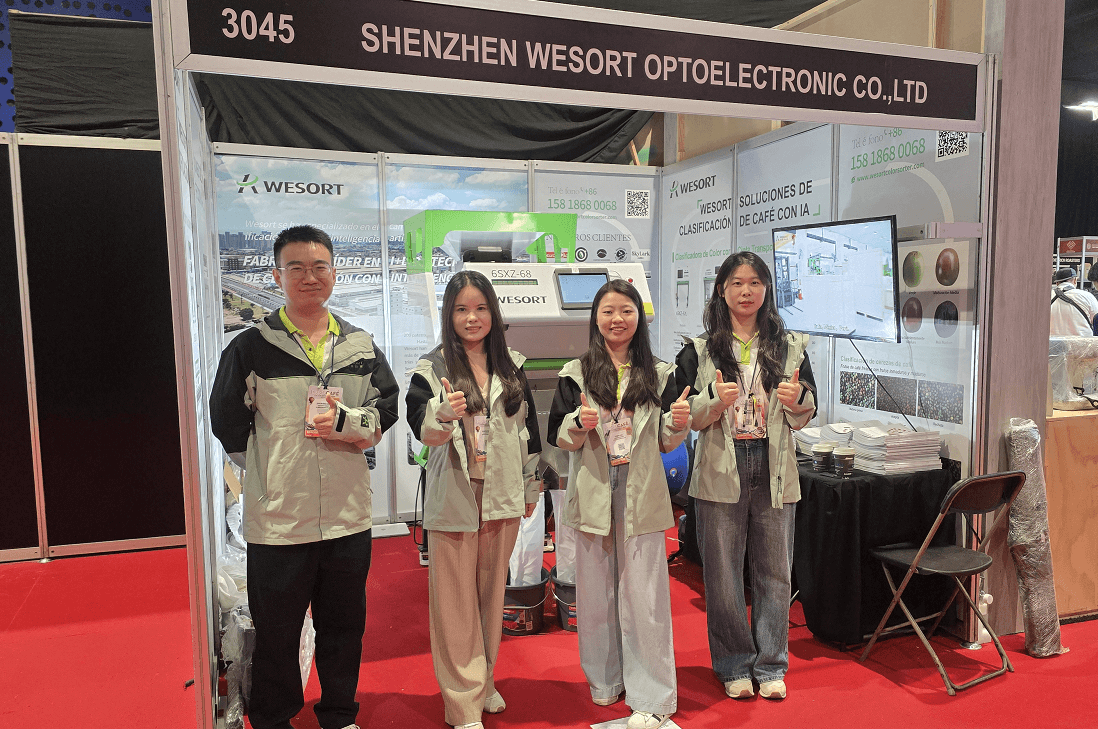
In Mexico, coffee is more than just a drink — it’s a culture, a tradition, and a vital industry. Yet, challenges like impurities, pest damage, and uneven coloration often diminish the value of even the most carefully cultivated beans. At EXPO CAFÉ...

The global demand for hazelnuts continues to rise, driven by the growth of confectionery, bakery, and healthy snack markets. As consumption increases, so does the importance of quality control. Hazelnut processors face mounting pressure to deliver ...
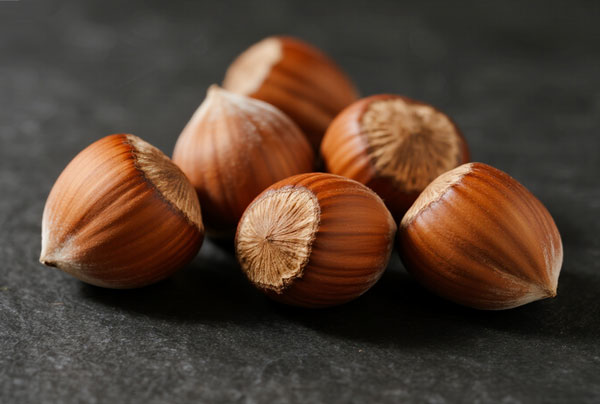
Hazelnuts are widely used in confectionery, bakery, and snacks, where product quality directly affects market value. However, hazelnut processing often faces serious challenges, such as pest infestation, seasonal labor shortages, and inconsistent m...
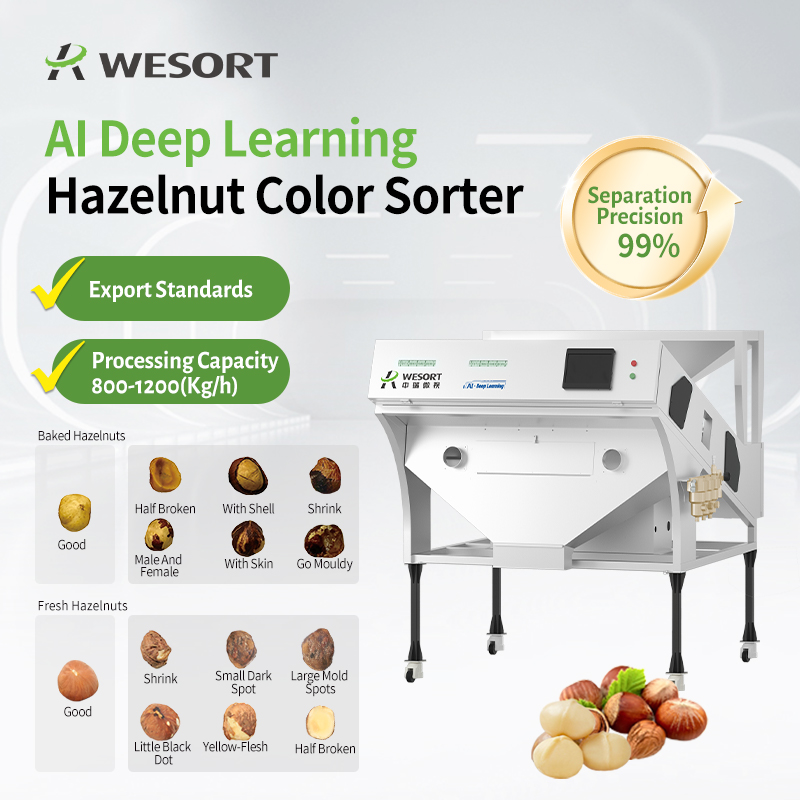
Hazelnut is the nut of the hazel and therefore includes any of the nuts deriving from species of the genus Corylus, especially the nuts of the species Corylus avellana. It is also known as cobnut or filbert nut according to species. A cob is roughl...
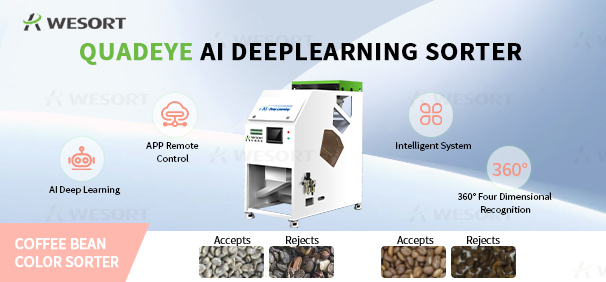
When you enjoy a smooth cup of coffee, you may not realize how much work goes into ensuring its purity and flavor. From harvest to cup, every step matters—and one of the most critical yet often overlooked stages is coffee bean sorting. Common Cof...
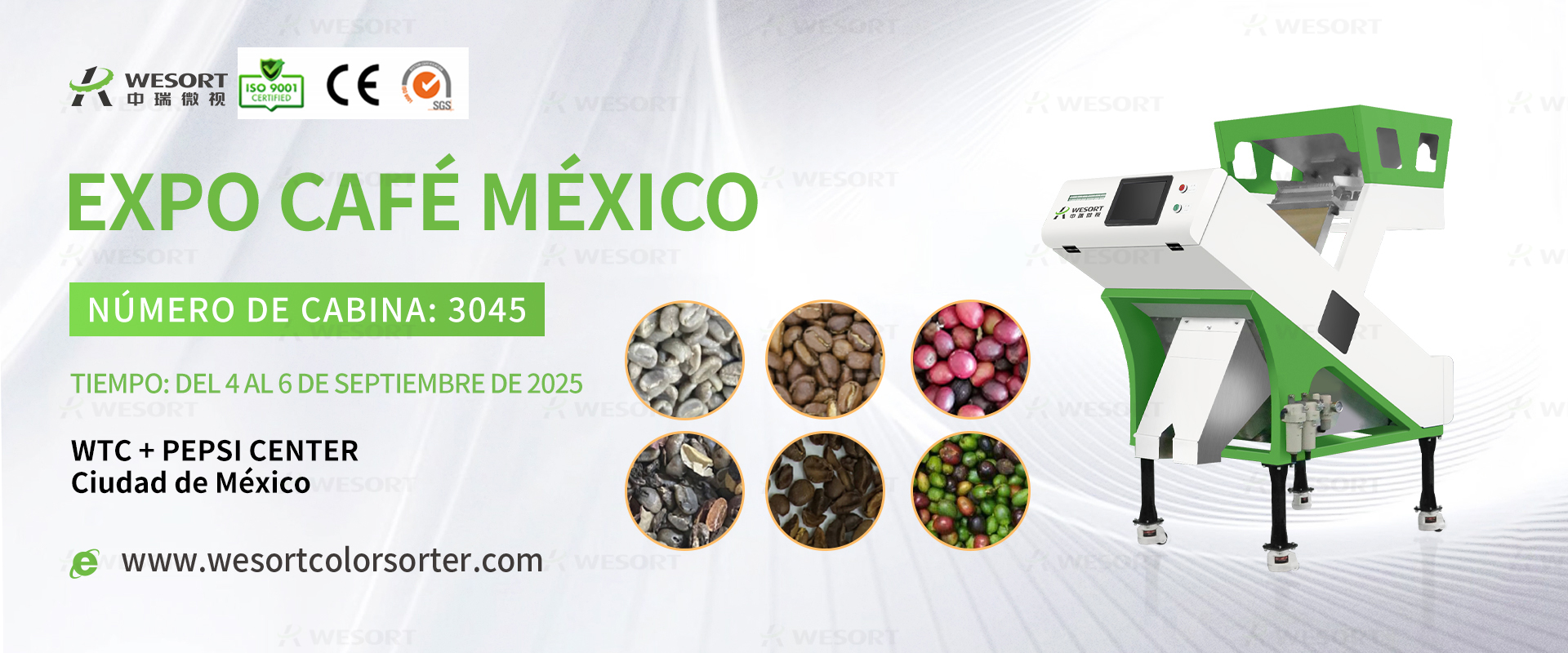
Dear Coffee Industry Partners, The Mexican Coffee Shop Expo 2025 is just around the corner—and WESORT , a leader in intelligent sorting technology, will be there to showcase our core solution for coffee processors: Coffee Bean Color Sorters. Mark...
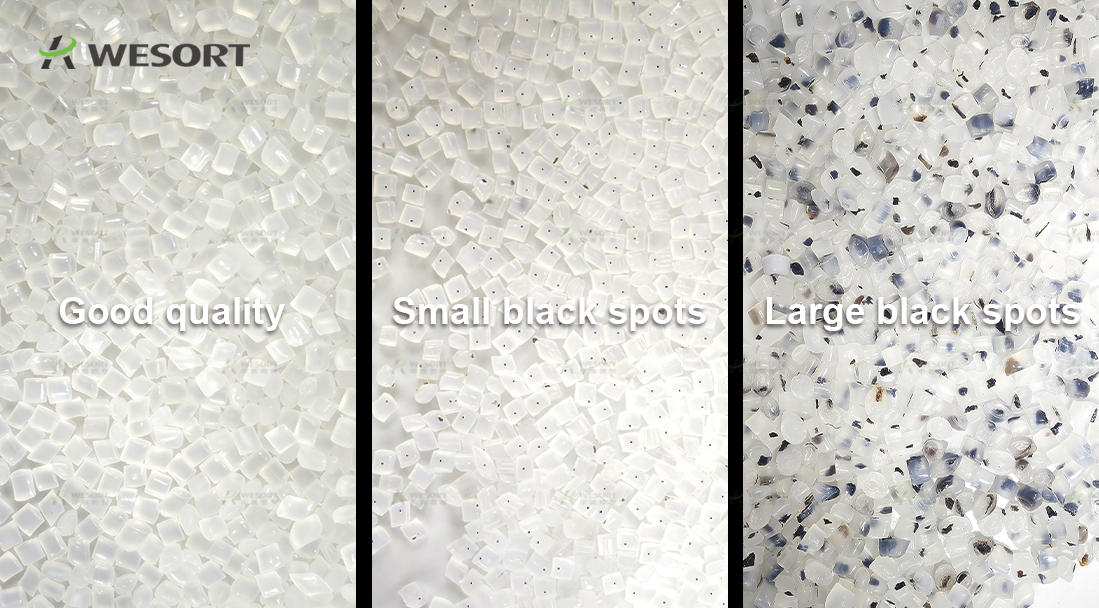
In the plastic pellet production process, color purity often directly determines the product's selling price and market competitiveness. Especially for transparent, white, or light-colored plastic pellets, even tiny black specks can affect the appe...

In modern agriculture, food processing, and recycling, quality control plays a vital role. This is where an optical sorter comes in. Many buyers often ask: What is an optical sorter? What does it do? How much does it cost? And how is WESORT optical...
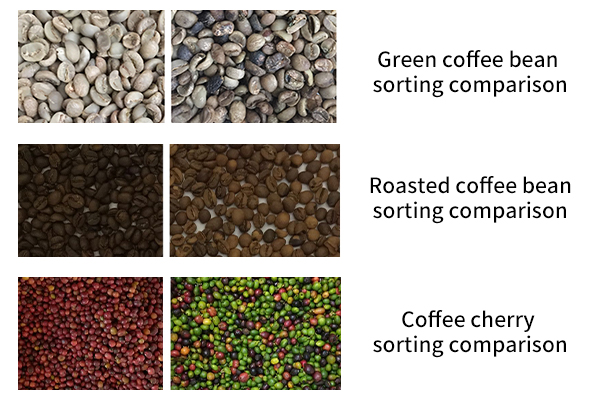
In the coffee industry, the quality of the final cup often depends on the smallest details during processing. One crucial step is removing defective beans, foreign materials, and color inconsistencies. This is where a coffee bean color sorter plays...

Coffee processing is a complex and meticulous task that involves several stages to transform raw coffee cherries into the high-quality beans we enjoy in our morning brew. One crucial step in this process is the sorting of coffee beans based on thei...

In the world of walnut processing, even the smallest imperfection can significantly impact product quality, market price, and brand reputation. Mold, insect damage, broken pieces, or inconsistent color are common defects that reduce the value of wa...

In the competitive coffee industry, quality is everything. Yet defects such as moldy beans, insect damage, immature coffee cherries, and inconsistent roasting levels can severely impact the taste, aroma, and grade of your coffee. Traditional sortin...

The demand for high-quality, uniformly sorted walnuts is rising globally due to increasing consumption, especially in the health food and snack industries. To meet market expectations, walnut processors are looking for advanced walnut sorting machi...

In the nut deep processing industry, the multi-level and accurate sorting of walnut kernels is not only related to product quality, but also directly affects corporate profits and brand reputation. However, many factories still face three major pro...

Meta Description: Looking for the top hazelnut sorting machine manufacturer? WESORT offers advanced hazelnut color sorters with AI deep learning to efficiently remove defects, pests, and foreign materials. Boost your hazelnut processing efficienc...

With the growing popularity of specialty coffee, the purity of coffee beans determines the aroma and taste of a cup of coffee. Achieving 99.9% purity requires high-performance coffee bean sorting equipment. Among Chinese coffee bean color sorter ma...

What's the most vexing issue in the hazelnut industry chain? It's not yield, but quality. Defects like mold, wrinkled skin, and foreign matter not only reduce product value but can also put export orders at risk. The solution isn't to increase the ...

Every hazelnut tells a story—about the soil it grew in, the care during harvest, and the precision of its processing. Yet between farm and final product, hidden defects like mold, insect damage, and discoloration can turn premium hazelnuts into cos...